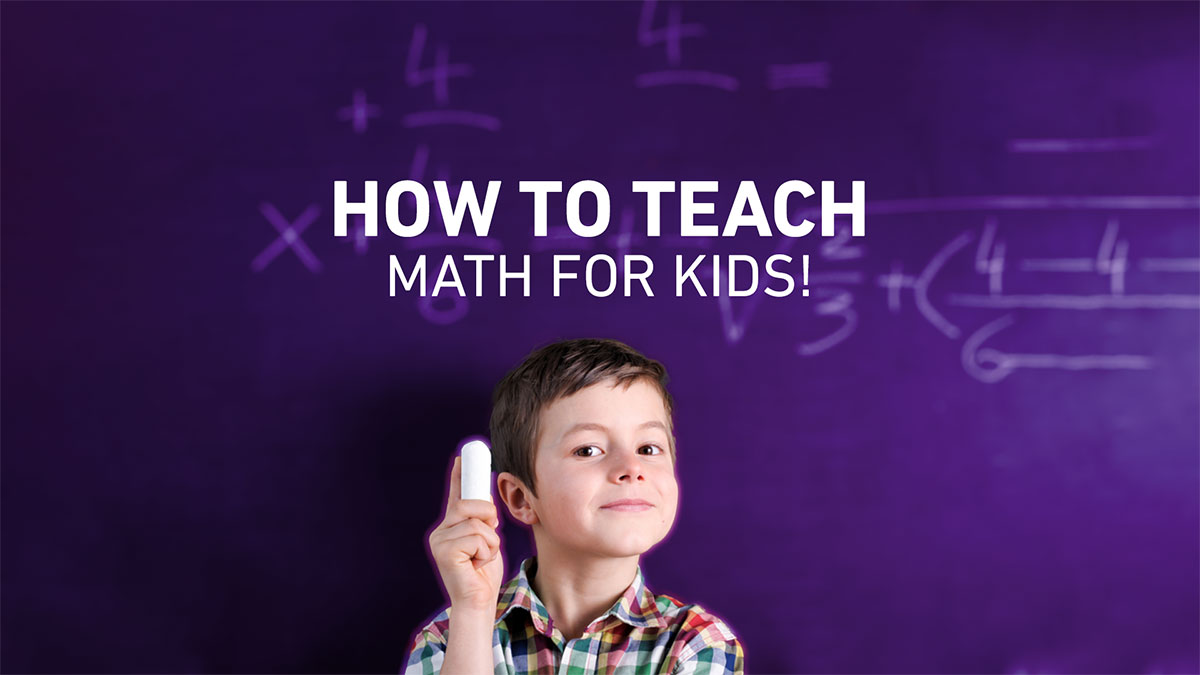
Many children find it difficult to understand math issues and they may hate this subject and it becomes one of the heaviest subjects for study and learning, which is the opposite of the nature of mathematics. By offering a variety of strategies to help their young children practice and develop their athletic abilities.
Read this article for more tips on how to teach your kids math.
The importance of learning mathematics comes as it is one of the basic and most important concepts in our lives because it is the basis of transactions in daily life, and children can learn it at an early age easily because he has become accustomed to using arithmetic while playing in entertaining and interesting ways such as counting things, games and fruits, as these games help him begin to understand Sophisticated or perhaps more complex arithmetic operations than subtraction and addition.
What is the importance of a child learning mathematics?
It is important for the child to learn mathematics and arithmetic in order to be able to understand the daily transactions during his life, including:
- Use his own money to buy things
- Learn to read the time and clock
- Increased self-confidence and ability to speak to others with confidence
- Develop his ability to solve problems
So how do you teach your son/daughter math and math skills?
- Start by counting
We can learn mathematics starting with counting. You can start teaching your child how to count and other basic math concepts so easily that it might surprise you! For example, put three apples on the table and ask your child to count them with you and add or subtract them to learn simple addition and subtraction.
Young children can begin to understand the idea of numbers in its simplest form through this type of exercise.
- Include photos and visuals
When teaching kids math concepts, pictures are an interesting and useful teaching aid. Concepts can be made simpler for children who are just beginning to learn how to count using visual and audio aids. Pictures can be used to teach young children addition and subtraction as well as help them learn what each number looks like. Pictures can really help your child understand these kinds of basic ideas in mathematics.
- Use flashcards
When teaching mathematics to children, flash cards are a useful teaching tool. They are easy to make at home using tools you probably already have and make for a fun and hands-on learning experience. It’s not necessary to go out and buy expensive flashcards from the bookstore, for example, if your little one is having trouble remembering what the number five looks like. Instead, take a few sheets of paper or note cards and write the numbers one through five with a marker on each card.
- Make math fun.
Teaching math to kids doesn’t have to be boring or complicated. You can apply math concepts in many ways to your daily life to make learning more interesting and engaging.
To help your little one understands what “halves” looks like, you could, for example, cut an apple into two equal-sized pieces if they are learning about fractions. When learning is integrated into children’s daily lives rather than being taught from a textbook or in a traditional classroom environment, children are often better able to understand information.
- Use common items.
When you use common elements, teaching math to kids is much simpler. For example, you can always use a ruler to educate children about measurements, and you can use an egg carton to show children how to multiply small groups of things.
- Use interactive teaching methods
Using interactive teaching methods, many of which you can use in your home or at school, teach your child a range of math concepts through it. Although the main purpose of these teaching tools is to teach kids how to count, they can also be used to teach kids other basic math ideas.
Before introducing any of these teaching strategies, consider how your little one might learn best and appropriate for them not with speed but with mastery of understanding. If learning is not in a comfortable way, they can end up learning math as more of a responsibility than a help to both of you.
